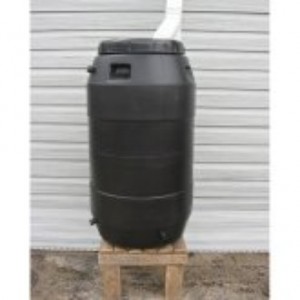 The price range of rainwater collection is as wide as there are different designs. A rainwater collection system can be as simple and as inexpensive as a rain barrel with a single downspout collecting from a small amount of roof. Generally a homeowner can purchase and install the components for this type of introductory system. Small irrigation needs are the key here. Water usage can easily exceed storage.
The price range of rainwater collection is as wide as there are different designs. A rainwater collection system can be as simple and as inexpensive as a rain barrel with a single downspout collecting from a small amount of roof. Generally a homeowner can purchase and install the components for this type of introductory system. Small irrigation needs are the key here. Water usage can easily exceed storage.
For larger usage needs, more storage will be required to get through the “dry season”. Based on 3 months of dry and your water consumption requirements, this will help determine total storage needed. Above ground poly tanks are the most economical, with pricing starting around $.55 cents per gallon stored.
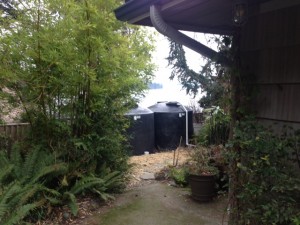 Having a system with multiple uses will help the system to be used more efficiently. If you want to irrigate, why not use the water that would normally overflow during the rainy season to supplement household usage such as toilet flushing and laundry facility? You have the water available in the summer for irrigating and during the rainy season, you’re getting use and reducing your water and septic bill. This type of design and use will help reduce the cost of your system by supplementing city water use.
Having a system with multiple uses will help the system to be used more efficiently. If you want to irrigate, why not use the water that would normally overflow during the rainy season to supplement household usage such as toilet flushing and laundry facility? You have the water available in the summer for irrigating and during the rainy season, you’re getting use and reducing your water and septic bill. This type of design and use will help reduce the cost of your system by supplementing city water use.
Or, you may choose to have your rainwater collection system be your primary water for whole house including potable. The price depends on type of storage, style of storage, and complexity of design. But, with larger systems you get more “bang for your buck” per gallon stored.
You can make rainwater collection affordable with the right design.

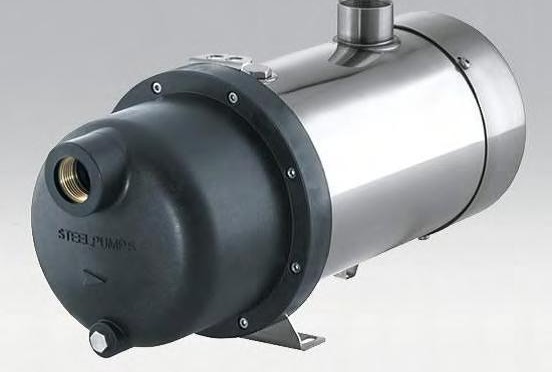
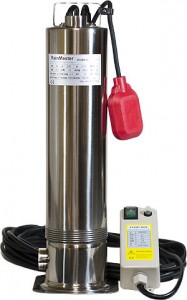 Either a submersible pump or centrifugal pressure pump will be required to transfer water from storage to filtration and use. A submersible pump will need means of regulating flow.
Either a submersible pump or centrifugal pressure pump will be required to transfer water from storage to filtration and use. A submersible pump will need means of regulating flow.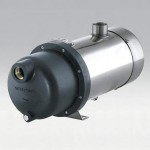 The most common method of conveyance would be a booster pump. These pumps are generally centrifugal pumps and can be placed in the mechanical room or well shed. A centrifugal booster pump is used without an exterior pressure tank and is considered an “on demand” pump, meaning that when the faucet is opened, the pressure in the pump drops down to low pressure – usually 20 PSI, and the pump will start running and maintain constant pressure while the faucet is open. Once the faucet is closed, the pump will continue to run until it meets its high pressure cut off.
The most common method of conveyance would be a booster pump. These pumps are generally centrifugal pumps and can be placed in the mechanical room or well shed. A centrifugal booster pump is used without an exterior pressure tank and is considered an “on demand” pump, meaning that when the faucet is opened, the pressure in the pump drops down to low pressure – usually 20 PSI, and the pump will start running and maintain constant pressure while the faucet is open. Once the faucet is closed, the pump will continue to run until it meets its high pressure cut off.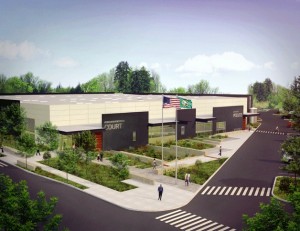
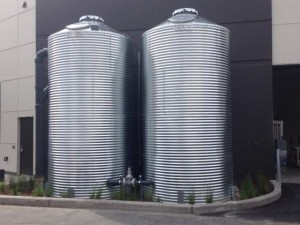 the soil during watering will reduce the building’s stormwater runoff and save money by not using city water.
the soil during watering will reduce the building’s stormwater runoff and save money by not using city water.